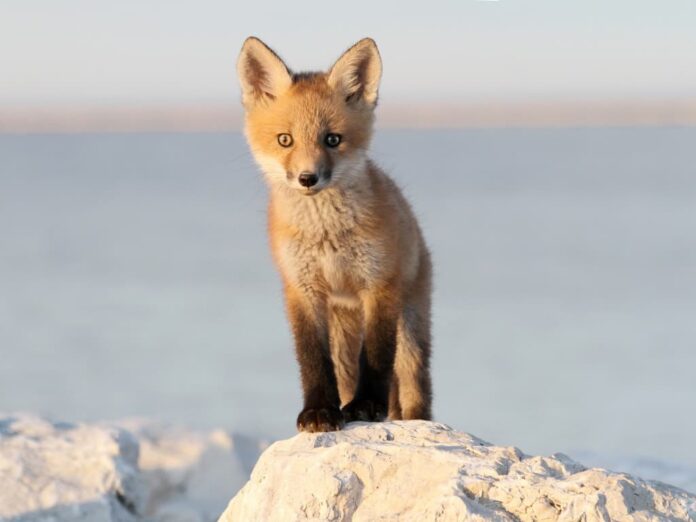Adorable fox species refer to the ones that have cuddly looks and irresistible faces that you will love. There are over 30 fox species today, and many of the colorful ones are very cute. This is just the thing that we are going to talk about today, and you will find them all below. I include the 10 most adorable fox species in the list, so feel free to check them out. Let me know which one you think is your most favorite fox species.
1Arctic Fox
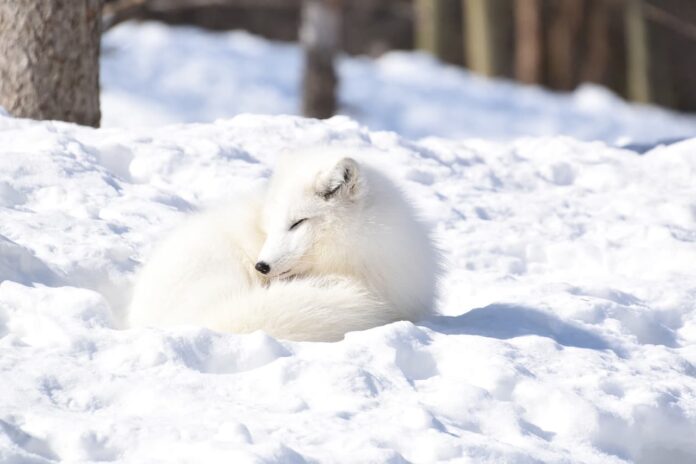
A small white fox that looks like this can definitely melt your heart because it is so cute. By the look, you can already that this majestic canine belongs to the arctic tundra. The Arctic fox is a species that lives in the Arctic Circle including Canada, Europe, Greenland, Iceland, and Russia. Thanks to the thick fur, it can keep an Arctic fox warm even the temperature goes below zero degrees. The interesting thing about them is that their fur is not always white as it changes seasonally. This beautiful white coat appears only in winter so that these adorable foxes can blend into the snow. In summer, they shed the coats which bring them bluish-gray, brownish, or grayish color instead.
One of the most adorable things about Arctic foxes is that they wrap their tail around their body when they sleep. The fluffy tail acts like a blanket, keeping them warm in cold temperatures. At the same time, their feet also have a layer of thick fur that functions like built-in snow boots. The thick fur on the foot helps to muffle their footstep, making it harder for prey to hear them. Despite their small size, these little curious creatures can also hunt small mammals and rodents like lemmings. Arctic foxes are omnivores, and they eat almost anything from fruit to birds, insects, and even carrion in winter. When summer comes and fruit is plenty, they also collect and hide extra food under the rocks for winter. Arctic foxes are solitary animals, and they only come together in mating season.
2Bengal Fox
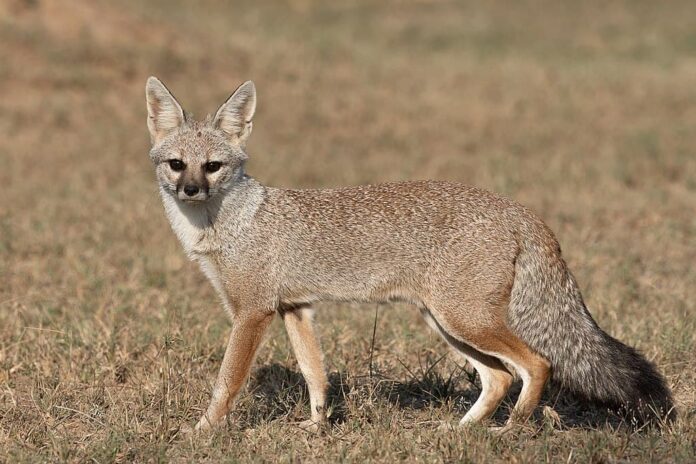
Also goes by the name of Indian fox, this is an Asian fox species endemic to the Indian subcontinent. Just like the Arctic fox, the coat color of this fox species also changes at different times of the year. A Bengal fox is medium-sized, and it has a large bushy tail with a black tip which is its most prominent feature. The tail alone accounts for as much as 60% of the length of its body, and it is very important. Usually, the tail trails behind when it walks but the fox will carry the tail horizontally when it runs. If the fox wants to make sudden turns, it will hold the tail vertically instead. As territorial animals, Bengal foxes use scent markings and scratches to indicate their hunting grounds and territories. Bengal foxes are omnivores, and they mainly feed on eggs, fruits, insects, reptiles, and rodents.
This fox species prefer to live in foothills and non-forested areas with arid environments like open grassland, semi-desert, and thorny scrub. This is why it has large ears that function as an adaptation for thermoregulation in their hot and dry habitats. Because Bengal foxes are not afraid of humans, sometimes they are also found in agricultural fields. The fascinating thing about them is the fact that they can dig underground dens with complexity. Those include many rooms and even escape routes where a breeding pair lives with the pups. The threats to Bengal foxes are habitat loss and degradation, parasites, pathogens, persecution, and roadkills. Another major threat is the disease that this canine often faces such as canine distemper virus and rabies. People also hunt them for fur, sports, and body parts to use in traditional medicines as well.
3Cape Fox
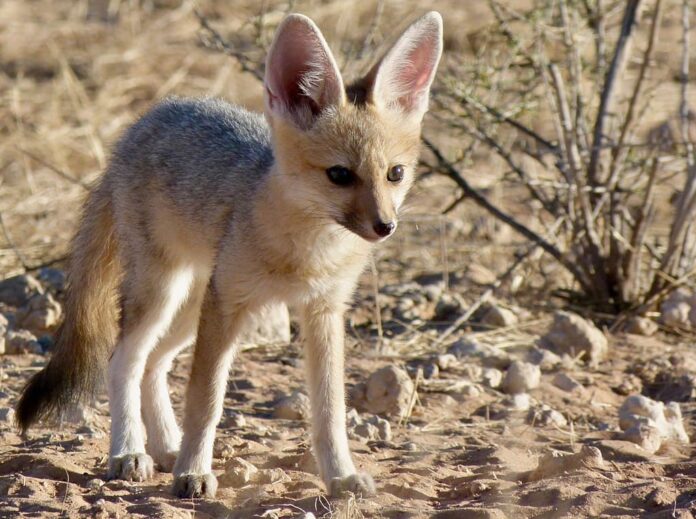
Here you are looking at a true fox that is also the smallest canid in South Africa. The most adorable things about them are definitely those large pointy ears and their facial expressions. Cape foxes have a dark coloration around its mouth, and there are white patches on its cheek as well. As for the fur, it is gray-silver while the head and forelimbs are reddish with black patches on the hind limbs. These foxes are remarkably agile, and their bushy tails serve as a counterbalance when dodging and weaving. Apart from being great runners, Cape foxes are active diggers but they also live in burrows abandoned by other animals. They live in burrows underground, dense thickets, holes, or hollows in those areas.
Cape foxes inhabit mainly open country from open grassland plains with scattered thickets to arid savannas and semi-desert scrub. Not different from the rest of the adorable fox species in the list, this one is also an omnivore. Cape foxes prey on insects, mice, and other small animals but they also eat carrion and wild fruit. The adults are nocturnal while the pups play outside of the dens during the day. In contrast to the Bengal foxes, Cape foxes are not territorial so their ranges tend to overlap. Although these foxes usually forage separately, they sometimes share the dens communally as well. Cape foxes often die from diseases like canine distemper and rabies, but roadkill and traps are also their threats.
4Corsac Fox

Adorable face is one thing, but the silver-gray or yellowish fur that corsac foxes have is another thing. A fox of this species has small teeth and a wide head. At the same time, it has hooked claws that it uses for climbing trees and digging shallow holes. The awesome thing about these foxes is that they have excellent eyesight and a sense of hearing and smell. These help them to facilitate the detection of both predators and prey in their areas. Corsac foxes are not territorial, and they sometimes form packs and share dens with each other. These foxes use high-pitched yelps to alert other group members about potential danger and they bark while hunting.
Corsac foxes adapt to living in arid areas, and they inhabit grassy steppes and semi-deserts. As carnivores, the diet of these foxes consists of rodents such as ground squirrels, hamsters, and voles. However, they also don’t mind eating carcasses and fruits if their favorite meals are not around for hunting. The special thing about these canines is that they are able to survive long periods without food. Thanks to the lack of water in their native habitats, Corsac foxes adapt to extract moisture from the food they eat. One of their main threats apart from large birds and wolves are people who hunt them for their fur. The good thing is that their population is still doing good and stable in the wild.
5Fennec Fox
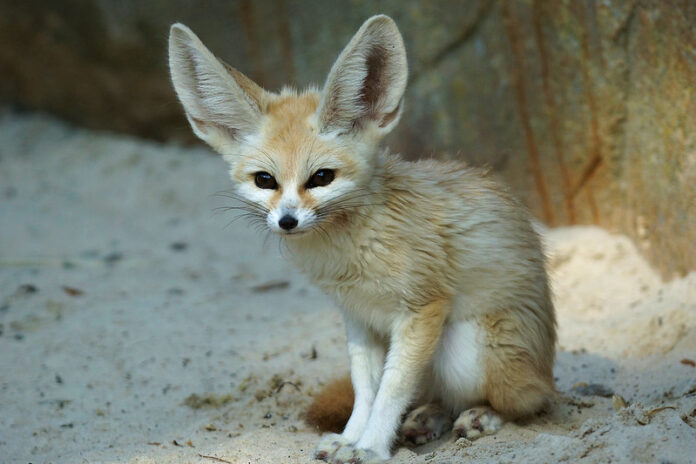
When it comes to the most adorable fox species, the fennec fox has to be on the list. A fennec fox has large ears with a tiny face and a pointed snout which is the perfect definition of cuteness. Those enormous ears are not for show, fennec foxes have extraordinary hearing that allows them to locate even underground prey. At the same time, their ears also help to dissipate excess body heat on hot days as well. Along with that, fennec foxes have thick fur that helps to keep them warm during cold nights in the desert. There is also thick fur on the soles so that they can walk without burning those tiny adorable feet. Small but strong, fennec fox subsists in arid desert environments as well as the most remote areas.
In fact, their ideal habitats are stable sand dunes which is why they are also common throughout the Sahara. Fennec fox is the only carnivore in the Sahara Desert with the ability to live for a long period without water. They have special kidneys that are specifically adapted to conserve water while obtaining moisture from the food that they eat. You can find them in sandy deserts and semi-deserts of northern Africa. These world’s smallest foxes are mostly carnivores, and they feed on birds, eggs, insects, lizards, snails, etc. Fennec foxes dwell in small groups of up to 10 individuals, and they mark their territory with urine. Unfortunately, their population appears to be at risk due to habitat loss, hunting, and traps for exhibitions or sales.
6Gray Fox
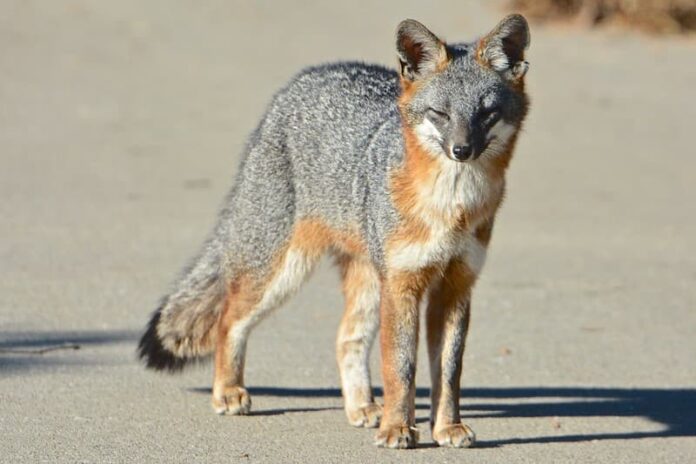
Just like the name suggests, this adorable fox species has silver-gray on its back and face. Apart from those, the chest, legs, and throats are more reddish and white in color. The long bushy tail of a gray fox has a black strip along the top with a black tip. Another distinctive feature is the thin black strip that runs from the outside of the corner of each eye to the head. The unique thing is that they are more like cats despite being foxes. They have cat-like feet with retractable front claws, long sensitive whiskers, and even elliptical pupils for night vision. These foxes have strong hooked claws that they use for climbing trees to escape from predators, search for prey, or sleep. However, their permanent homes are dens in old hollow logs or trees in caves, boulder piles, or mine shafts.
Gray foxes prefer ridges and rocky canyons, but you can also find them in grasslands, open deserts, and wooded areas. Their ranges are from Southern Canada, Mexico, and the United States to Central America and parts of South America. In their habitats, they feed on a wide variety of food such as birds, eggs, fruits, insects, small mammals, etc. They are one of the few fox species that raid people’s garbage bins in search of food. When eating, they do not chew their food but they tear it into small pieces and swallow it whole instead. These canines are very vocal, and they can use sounds such as bark, gekker, mew, and scream to alert and find each other. Their main predators are bobcats, cougars, coyotes, hawks, owls, and humans who kill them for their fur.
7Island Fox

Here you are looking at the descendent of the mainland gray fox, and it is native to the Channel Islands. These foxes have gray coloring on the back with rust coloration on the sides and white underneath. As for their faces, there are distinctive black, white, and rufous-colored patterns. Island foxes are smaller than their ancestors, and they are one of the smallest canids in the world. In spite of being tiny, these canines are territorial and use a few drops of urine to mark their territories. If there are other island foxes around, they use their body posture and facial expressions to show signs of dominance. Generally, they are docile and they show little fear of humans so people can also tame them.
Island foxes only live on 6 of the 8 Channel Islands off the coast of Southern California, you can’t find them anywhere else. There are different subspecies on each island with different genetic and physical appearances. For example, San Miguel Island foxes have longer noses and shorter tails than other island foxes. At the same time, their diet is also different based on the diversity of each island. So these foxes feed on bugs, fruits, insects, and marine invertebrates like crabs and more. On the islands, their habitats include coastal scrub, oak woodlands, shrubby areas, or wooded areas. These foxes are active during the day with peaks at dusk and dawn, and they have no natural predators.
8Kit Fox
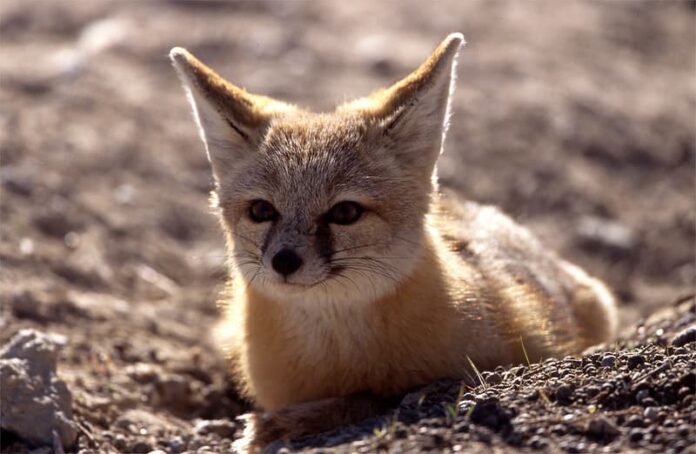
This is the smallest member of the Canidae in North America, and kit fox is one of a kind. Their colors range from gray to yellowish, and they have exceptionally large ears that stay close together on the head. The back of the ears is dark in color while the inner ears and undersides are lighter. At the same time, there are distinctive dark patches on each side of the nose and at the end of the tail. The combination of colors and appearance makes them one of the most adorable fox species in the family. Speaking of family, kit foxes live in underground burrows in pairs or small groups but they forage alone.
You can find them in central and northern Mexico to many parts of the United States. Kit foxes live primarily in arid regions such as chaparral, desert scrub, and grasslands as well as agricultural and urban areas. Because they live in hot areas, their large ears also help them with thermoregulation as well as hunting. These foxes are carnivores, and their main food are rabbits and rodents but they also eat fruits when meat is scarce. Along with those, they also scavenge carrion and eat ground-dwelling birds, large insects, lizards, and snakes. While most foxes in the list are monogamous, this one is polygyny which means a single male mates with multiple females. Their main threats today are habitat loss for agriculture, degradation, and fragmentation.
9Marble Fox
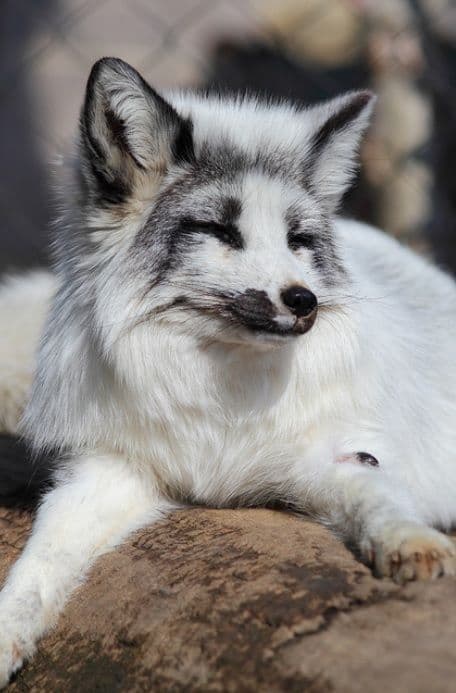
The unique thing about this adorable fox species is that it is not a naturally occurring species. People bred marble foxes from red and silver foxes, and their other names are Arctic marble fox and Canadian marble fox. Marble foxes are absolutely gorgeous with their thick white fur with delicate streaks of black, gray, or tan. The look of their coat is reminiscent of stone marble, and they look very cute. Plus with the patches of black or tan across the face and on the ears, their appearance is one of a kind. Besides the color, marble foxes have short legs, short muzzles, and small rounded ears with acute hearing. Even with short legs, they can travel large distances over both land and sea ice since they are very mobile.
Marble foxes are one of the popular exotic pets in the United States, and they are like cats. Pet owners can bond with them and train them although things can be more tricky with foxes than with cats and dogs. On top of that, marble foxes are also very clever with delightful personalities as well. To keep them happy and healthy, puzzles are what you need because these foxes are very intelligent. These foxes eat fruit, poultry, red meat, veggies, and even some dog foods. In the wild, marble foxes are both hunters and scavengers with the help of their senses of hearing and smell. Their senses are so accurate they can even detect small animals that are active underneath the snow.
10Red Fox

These are the fox that you often see in cartoons and movies, and they are also among the adorable fox species. A red fox has red fur across the face, back, sides, and tails while the chin, throat, and belly are grayish-white. As for its feet, they are black in color while the large and pointy ears have black tips. One of their most noticeable characteristics is definitely the fluffy white-tipped tail. These foxes are solitary which is easy for them to escape and hide from people. They only come together during the breeding season in winter to mate and raise the young. Plus with their ability to jump high fences and swim, no doubt why they are very popular as sharp canines.
Red foxes live in brushy fields, open areas in woodlands, and wetlands throughout the continental United States. These foxes feed on amphibians, birds, and fruit, but their favorite meals are rabbits and rodents. They are amazing hunters thanks to their excellent hearing that allows them to locate even rodents digging underground. These foxes constantly hunt for food even if they are not hungry because they can save it for the next meal. Red foxes are also known to steal food from farms or garbage cans in rural or suburban areas as well. These foxes are famous for being cunning and smart due to their ability and flexibility to find food even in winter. Their common predators are bald eagles, bears, coyotes, gray wolves, mountain lions, and of course, humans.
Related Post: Leopard Subspecies Living Today

